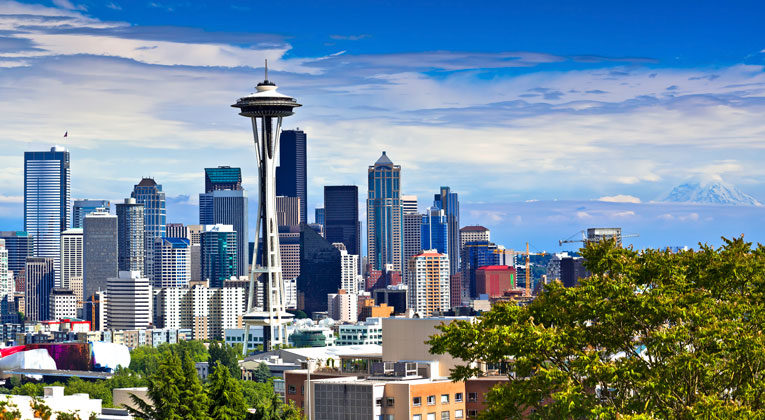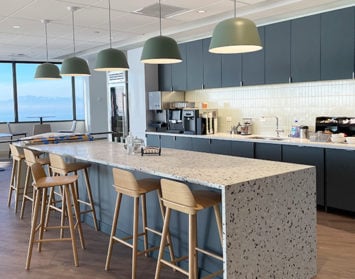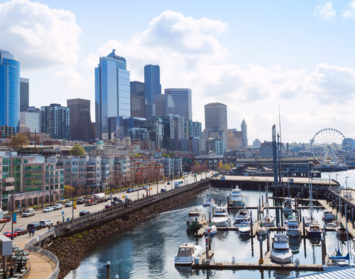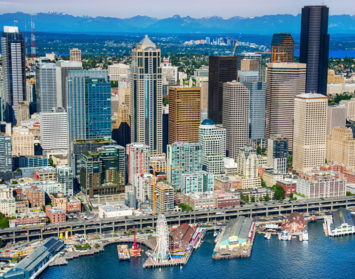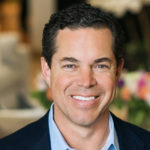By Owen Rice
With a “new normal” emerging where office tenants are offering their employees varying degrees of a hybrid work environment, the Seattle area life science market, one which is dependent on space to perform research and manufacturing, is thriving. The success of these companies is placing a huge demand on buildings that offer laboratory and manufacturing space. Many of our region’s life science companies have raised unprecedented amounts of capital pursuing cures for multiple diseases as well as future treatments of COVID. The supply of lab space in both Seattle and Bothell has seen incredible competition and upward pressure on rents, where wet lab rents have gone up as much as 20% in the last year. In some cases, depending on the size requirement, one can barely find existing lab space to satisfy one’s real estate requirement.
With over 5.3M SF of laboratory and R&D space in Seattle, vacancy rates are hovering at 1%, which is fueling developers to convert well over 1 million square feet of office space to laboratory and R&D throughout our region. Recently, Trammell Crow Company (a wholly owned subsidiary of CBRE), constructed a 136,000 SF office building located at 1930 Boren Avenue which delivered in the heart of the COVID pandemic. The building is located across the street from Seattle Children’s new building called “Building Cure.” Given the lack of demand of newly constructed office space, Trammell Crow Company sold the building as a future Life Science asset. Oxford Properties Group, a commercial real estate investor and asset manager from Toronto, acquired it for $119M and immediately embarked on converting components of the building to support the demands of life science companies. Drafting off the success Trammell Crow Company had with 1930 Boren, they recently announced they’re preparing to develop a new life science building next door on a corner lot they own at 1916 Boren Avenue. The building is expected to be 11 stories tall and over 235,000 SF.
Given the pending success of 1930 Boren conversion to life science, many other office buildings are converting to life science as well to support the burgeoning growth of demand which has recently exceeded 1 million square feet throughout the Puget Sound. Current asking lease rates for Class A laboratory space vary significantly by product, the least expensive spaces are promoting asking lease rates of $69 per square foot per year, net of operating expenses while the most premier spaces are asking $85 per square foot per year, net of operating expenses.
More new construction is on the way in Seattle, driven by developers looking to capture future life science demand. Da Li Development USA LLC is planning to develop a life science building at 222 Fifth Avenue North and has recently suggested that they may start construction early 2022. The building would be 8 stories tall and add 188,000 SF of life science product to our market. Developers Touchstone and Portman Holdings are building a two-building campus in Seattle’s University District located at 12th and Brooklyn Avenues NE, named the Chapter Buildings. Located just blocks from the University of Washington campus and Sound Transit’s Link Light Rail, these projects will deliver approximately 400,000 SF of Class A office and laboratory space. Construction is expected to break ground as early as January 2022 with a delivery 18-20 months later.
Some of the most anticipated, high-end lab space in South Lake Union being constructed in BioMed Realty’s Dexter Yard. Located at 700 Dexter, the project is scheduled complete construction later this year. The building encompasses approximately 500,000 square feet of space among 15 stories, many of which have remarkable views of downtown Seattle and South Lake Union.
Bothell, WA, which was once known primarily as a suburban office market has seen exponential life science growth in 2021. In December of 2020, Alexandria Real Estate Equities, the nation’s largest life science real estate developer, paid nearly $122M for two Bothell assets on Monte Villa Parkway as well as Monte Villa Farms, to support the growing demand for manufacturing space for our region’s life science tenants. Shortly thereafter Alexandria purchased a 17-building portfolio totaling +/-640,000 SF on 51 acres located in the Bothell submarket known as Canyon Park for $145M. Currently the Canyon Park portfolio is home to a variety of tenants, some life science and others office, warehouse and manufacturing but conversions to laboratory space for some of the buildings is already planned. The portfolio is located next to some of Bothell’s largest life science tenants such as Seagen and AGC Biologics. While the Bothell life science market is smaller than Seattle, is still boasts over 2.7M square feet with vacancy hovering just shy of 7%. Current asking lease rates for Class A laboratory space in Bothell are $32-$36 per square foot per year, net of operating expenses.
Bothell, once home to just a few life science companies is now regarded as an important hub for our region’s life science companies looking for lower cost alternatives to Seattle. Already calling Bothell home are companies such as Bio Rad, nanoString, Adaptive Biotechnologies, SonoSite, Lyell, Juno, Lundbeck and others. With properties such as West Tech’s 205,000 square feet Alloy Innovation Center in Bothell’s North Creek submarket and Steelwave’s 130,000 square feet Element Research Center in Canyon Park, there remains opportunities for other Puget Sound life science companies to seek out Bothell as a future place for growth.
Owen Rice is an executive vice president at Hughes Marino, a global corporate real estate advisory firm that exclusively represents tenants and buyers. Contact Owen at 1-844-662-6635 or owen@hughesmarino.com to learn more.

